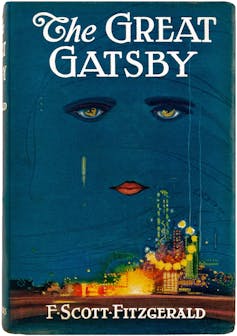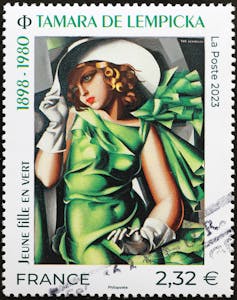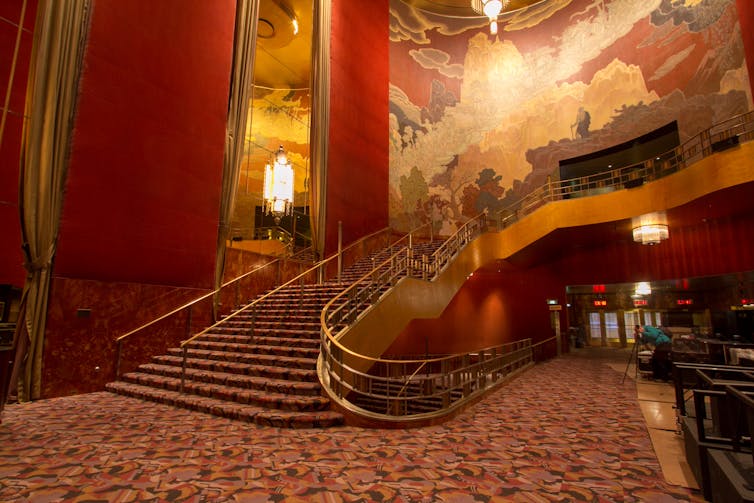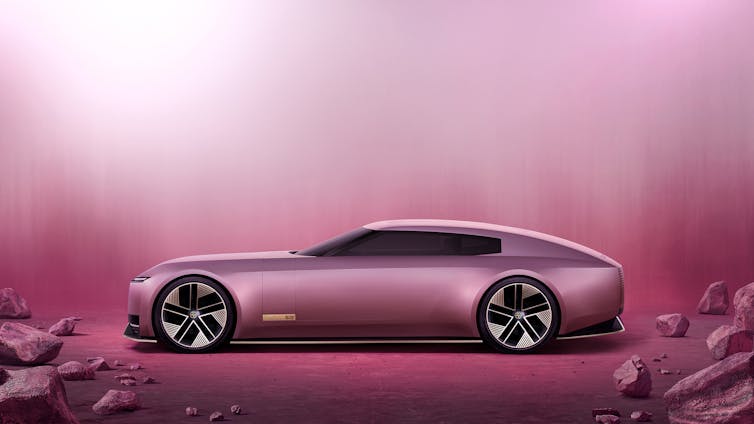In Paris in 1925, the French government initiated its ambitious International Exhibition of Modern Decorative and Industrial Arts with one specific goal – to showcase and celebrate the excellence of French modern design. This display of innovative ideas contributed to the rise of a ubiquitous design style that became known as art deco.
Originally conceived in western Europe in the 1910s, art deco became dominant in the 1920s and flourished between the first and second world wars. In the US it was known as art moderne (or streamline moderne), a symbol of American interwar prosperity, optimism and luxury – the epitome of the “roaring twenties”.

Francis Cugat / Charles Sribener & Sons
Although known by various names, the term art deco (short for the French arts décoratifs) has been attributed to the Swiss-French architectural designer Le Corbusier. He harshly criticised the new style in his journal L’Esprit Nouveau,pithily claiming that “modern decoration has no decoration”. Likewise, historian Nikolaus Pevsner considered its “jazzy modernism” a perversion of true modernism.
The term was only confirmed in 1968 with the publication of Bevis Hillier’s book Art Deco of the 20s and 30s, which fortified the style’s name. Hillier described art deco as “the last of the total styles” affecting “everything, from skyscrapers and luxury liners to powder compacts, thermos flasks, lampposts and letterboxes”.
In America, art deco spanned the boom of 1920s and the bust of the Depression-ridden 1930s. F. Scott Fitzgerald’s novels The Beautiful and the Damned (1922) and The Great Gatsby (1925) reflected the style of the period: flappers and “sheiks” embracing the spirit of frivolity, liberation and hopefulness.
The “machine age” was in full swing, and technology was rapidly improving quality of life. The period saw the introduction of the industrialised printing press, radio, the first skyscrapers and modern transportation. There was a sense of excitement and expectancy in the air, a time of anticipating a future filled with promise and possibility.
A sense of style
Stylistically, art deco’s distinct machine aesthetic replaced the flowing, floral motifs of the earlier arts and crafts and art nouveau styles. This movement incorporated streamlined, geometric designs that expressed the speed, power and scale of modern technology.

Spatuletail / Shutterstock
Design influences came from the early 20th century art movements of cubism, futurism and constructivism as well as from the ancient exotic cultures of Egypt, Assyria and Persia.
Zig-zags, sunbursts and stylistic flowers became synonymous with the style, along with the use of bright colours (influenced by fauvism), strong rectilinear shapes and new materials such as aluminium, stainless steel, chrome and plastic. According to art deco expert Alastair Duncan: “for the first time, the straight line became a source of beauty.”
Art deco often conjures up images of delicate Lalique glassware or the vibrant abstract designs of British ceramicist Clarice Cliff. But despite its European origin, art deco is perhaps best defined by American architecture.
The Chrysler Building, the Empire State Building and the Radio City Music Hall are among the most impressive examples with their sleek, linear appearance with stylised, often geometric ornamentation that transformed New York City into a futuristic modern metropolis. It is perhaps inevitable that art deco would influence film-making (Fritz Lang’s Metropolis, from 1927, for example) and later 20th-century design styles, like retrofuturism.

Brian Logan Photography / Shutterstock
While painting is not closely associated with art deco, Tamara de Lempicka’s highly stylised portraits of aristocrats and socialites echoed the 1920s glamour and sophistication. Her work defined the role of “the new woman”, a term originally coined in the late-19th century, but also referring to a generation of free-spirited women with liberal interpretations of gender in the early 20th century.
Many of Lempicka’s paintings were of nudes with several set against a background of New York skyscrapers. The cubist influence in her work is also evident through her use of bold lines and geometric, angular shapes.
Lempicka’s work increased in popularity during the late-1980s when a string of celebrities, including Jack Nicholson and Barbra Streisand, expressed their admiration for her work.
Madonna, an avid collector of the artist who has admitted to owning enough Lempicka paintings to open a museum, referenced Lempicka’s unique aesthetic in her music videos for Open Your Heart (1987), Express Yourself (1989), Vogue (1990) and included projections of Lempicka’s paintings in her 2023-24 Celebration Tour.

Jaguar
Today, the art deco style remains relevant and desirable. In January 2025, Country and Town House magazine announced “art deco is back for 2025” in interior design.
Mercedes-Benz recently showcased its new Vision Iconic show car – its dramatic radiator grille designed to harken back to the “golden era of automotive design in the 1930s”. Jaguar also created a pink show car earlier this year, the advert for which referenced the art deco architecture of Miami Beach.
A century after its Parisian debut, the art deco movement continues to inspire with its modernity, elegance and freedom of form, creating a sense of nostalgia through juxtaposing perspectives from the past and present.

Looking for something good? Cut through the noise with a carefully curated selection of the latest releases, live events and exhibitions, straight to your inbox every fortnight, on Fridays. Sign up here.
This article features references to books that have been included for editorial reasons, and may contain links to bookshop.org. If you click on one of the links and go on to buy something, The Conversation UK may earn a commission.







